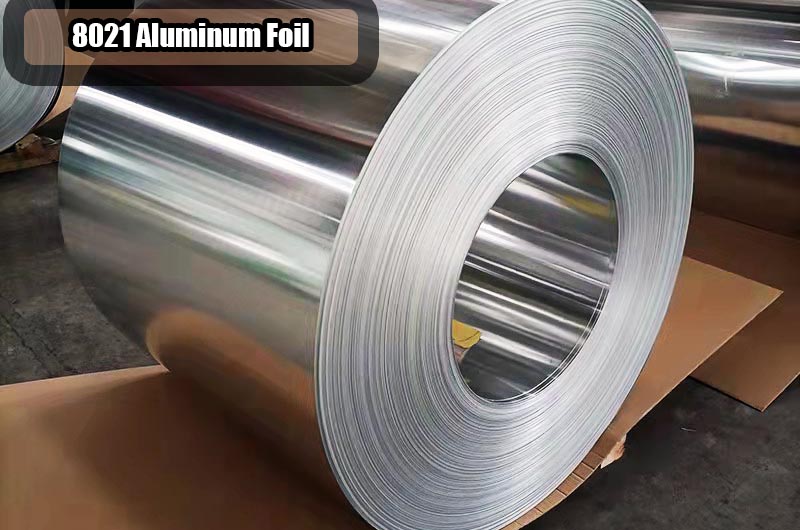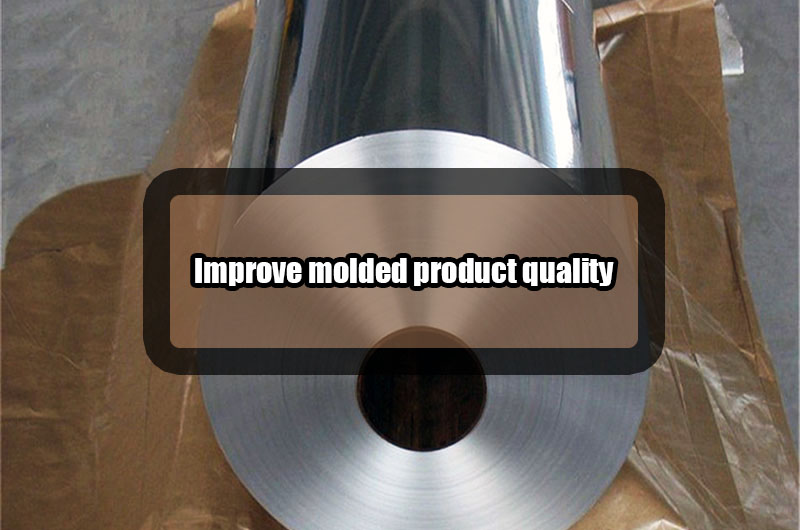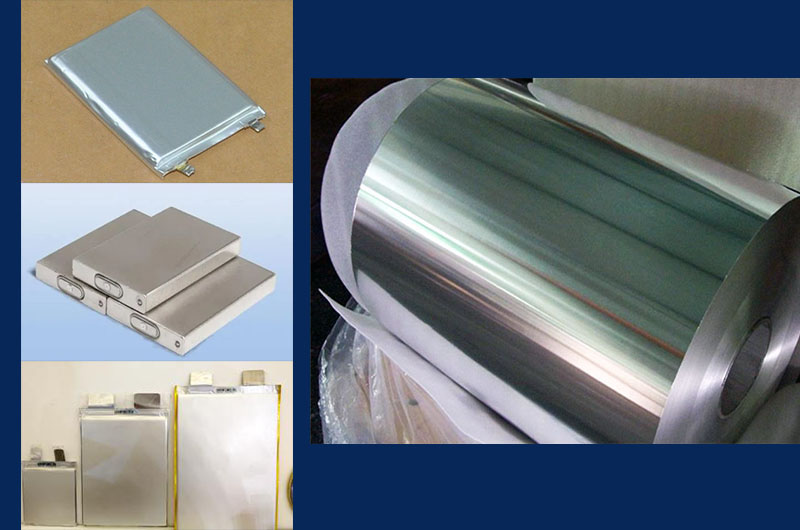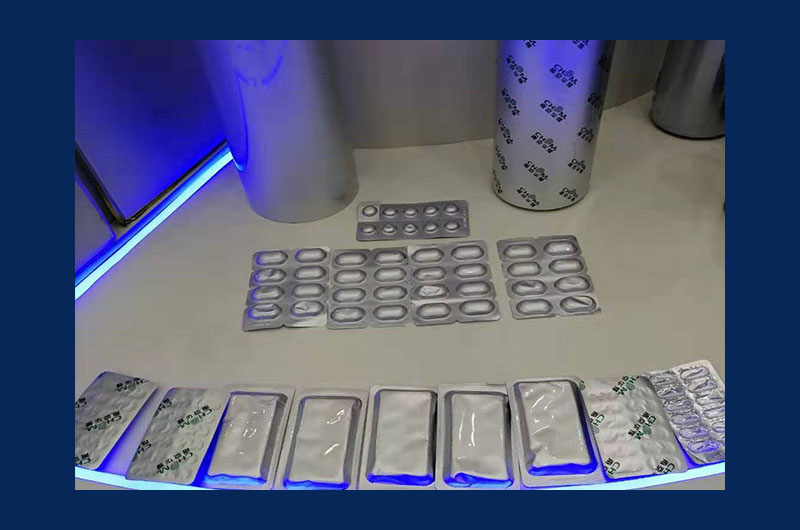- What Is 8021 Aluminum Foil?
- 8021 Aluminum Foil Features
- Advantages of 8021 aluminum foil
- Specifications of 8021 Aluminum Foil
- Mechanical Properties of Aluminum Foil Alloy 8021
- 8021 Aluminum Foil Chemical Composition
- 8021 Aluminum Foil Quality Testing Method
- 8021 Aluminum Foil Applications
- 8021 Aluminum Foil Production Process
- 8021 Aluminum Foil VS 8011 Aluminum Foil
- 8021 Aluminum Foil FAQs
What Is 8021 Aluminum Foil?
8021 aluminum foil is commonly used in various industrial and packaging applications, and is often used in food packaging and battery pouches due to its excellent barrier properties, high tensile strength and corrosion resistance.
8021 aluminum foil has good deep drawing performance, good corrosion resistance and heat sealability.
8021 aluminum foil is a key element used in food packaging and battery casings. It has good covering power and strong moisture-proof and barrier capabilities. It is non-toxic and odorless.

At present, the aluminum foil alloy used for soft pack batteries is mainly 8021 aluminum foil. 8021 aluminum foil for soft pack batteries has excellent punching properties and puncture resistance. After testing, the elongation rate can reach 13%-18%, and the cup height can reach 7.3mm.
The aluminum foil produced by Haomei Aluminum has passed multiple tests such as bacteria and mold to ensure that the finished products are safe, hygienic, non-toxic and tasteless. The main aluminum foils produced by Haomei Aluminum are:
- 8021 Aluminum Foil
- 8011 Aluminum Foil
- 8079 Aluminum Foil
- 1235 Aluminum Foil
- 1060 Aluminum Foil
- 1050 Aluminum Foil
- 3003 Aluminum Foil
8021 Aluminum Foil Features
8021 aluminum foil is cheap, durable, non-toxic, oil-resistant, resistant to chemical attack, and provides excellent electrical and non-magnetic shielding and good fragrance resistance.
- 1. It has the characteristics of good elongation, good deep drawing performance, good electrolyte corrosion resistance, and high heat sealing strength. Its main advantages are often used in deep drawing packaging materials.
- 2. 8021 aluminum alloy has strong mechanical properties, high explosion resistance, puncture resistance and tear resistance.
- 3. Aluminum foil 8021 has a smooth surface, uniform color, no spots, no oil stains, and most importantly, no pinholes, so it has excellent moisture-proof, light-shielding, and extremely high barrier capabilities.
- 4. 8021 aluminum foil has good transparency, strong moisture-proof and barrier capabilities, and no odor.
Advantages of 8021 aluminum foil
1. cut the expenses
Minimal pinholes and good barrier properties help reduce costs.
2. Improve molded product quality
Excellent stretchability improves the quality of formed products that require difficult bending, such as gusset bags, stand-up bags, and laminated tubes.
3. Improve lamination productivity
High tensile strength helps prevent tearing during lamination, greatly increasing productivity.
4. Uniform and smooth surface for better product appearance
A smoother, more uniform matte surface helps improve the appearance of the product, making the foil ideal for use in labels and other external packaging.

Specifications of 8021 Aluminum Foil
The production thickness range of 8021 aluminum foil is 0.006mm-0.2mm, and the width can be controlled at 100-1600mm according to customer requirements.
8021 aluminum foil alloy is widely used as packaging material after compounding, printing and gluing. Alloy 8021 can be processed within the following measurement ranges according to customer requirements.
| Specification | Value |
|---|---|
| Temper | H18, O, H14, H16, H22, H24 |
| Thickness(mm) | >0.006 |
| Core Material | Typical 3 inches (76 mm) |
| Surface Finish | Clean, Smooth Surface Finish |
| Packaging | Rolls, Sheets |
| Standards | ASTM, ISO |
| Eq to 8021 | UNS A98021; Aluminium 8021; AA8021; Al8021 |
| product | temper | Thickness(mm) | Width(mm) |
|---|---|---|---|
| 8021 battery case foil | O/HX2 HX4 | 0.036-0.055 | 200-1600 |
| 8021 Packaging Foil | O H22/H24 | 0.016-0.2 | 150-1600 |
| 8021 Medicinal foil | H14/H18 | 0.018-0.2 | 200-1600 |
Mechanical Properties of Aluminum Foil Alloy 8021
|
Tensile strength σb (MPa) |
Elongation δ10 (%) |
Cupping test value (mm) | Note |
| 90-110 | 13-18 | 6.2-7.3 | Erichsen Test |
8021 Aluminum Foil Chemical Composition
| Si | Cu | Mg | Zn | Mn | Cr | Fe | Ti | Other | Other total | Al |
| ≤ 0.5-0.9 | ≤ 0.1 | ≤ 0.05 | ≤ 0.1 | ≤ 0.2 | ≤ 0.05 | ≤ 0.6-1.0 | ≤ 0.08 | ≤ 0.05 | ≤ 0.15 | remainder |
8021 Aluminum Foil Quality Testing Method
In order to ensure the quality of 8021 aluminum foil, a series of tests are required. Main test methods include:
- 1. Chemical composition analysis: Use spectral analysis, X-ray fluorescence spectrometry and other methods to analyze the chemical composition of aluminum foil.
- 2. Physical performance testing: Use vernier calipers, balances, density meters and other instruments to test the physical properties of aluminum foil.
- 3. Mechanical property testing: Use universal testing machine, tensile testing machine and other equipment to test the mechanical properties of aluminum.
8021 Aluminum Foil Applications
| Industry | Application |
| Packaging | Used for packaging food, pharmaceuticals, and other products requiring high moisture, oxygen, and contaminant resistance. |
| Pharmaceutical | Used for packaging tablets, capsules, medical devices, and diagnostic kits. |
| Battery | Used as a current collector in lithium-ion batteries for the anode or cathode. |
Application fields : aluminum foil for lithium battery soft package aluminum-plastic film, cold-formed pharmaceutical aluminum foil packaging, etc.
- Pharmaceutical Packaging : 8021 aluminum foil is widely used in blister packaging in the pharmaceutical industry. Its excellent barrier properties protect drugs from moisture, oxygen and light, ensuring their stability and shelf life.
- Food Packaging : For food packaging applications such as packaging candy, chocolate and other moisture sensitive foods.
- Cosmetic Packaging : Due to its barrier properties, 8021 foil is used in cosmetic packaging to protect the contents from moisture and external contaminants.
- Battery Foil : In the electronics industry, it is used as a component in the production of lithium-ion batteries, and its barrier properties and conductivity are very important.
- Flexible Ducts : 8021 aluminum foil is used in flexible ducts for HVAC systems due to its combination of strength and flexibility.
- Cable Wrap : Used as a shielding material in the cable industry to protect cables from external interference and environmental factors.
- Heat Exchangers : In some heat exchanger applications, 8021 foil can be used as a heat transfer material due to its thermal conductivity.
8021 Aluminum Foil Application Specification Parameter Table
| Category | Application | Thickness (mm) |
| Pharmaceutical | Tropical blister base material 8021 aluminum foil | 0.045-0.065 |
| Cold-formed pharmaceutical 8021 O aluminum foil | 0.04-0.065 | |
| Pharmaceutical blister packaging 8021 aluminum foil | 0.047-0.065 | |
| Pharmaceutical 8021 aluminum foil | 0.04-0.065 | |
| Battery | 8021 soft pack battery aluminum foil | 0.035-0.055 |
| Lithium battery 8021 aluminum foil | 0.035-0.055 | |
| Food Packaging | 8021 yogurt lid aluminum foil | 0.05-0.06 |
| 8021 food packaging aluminum foil | 0.05-0.06 | |
| Other Packaging | 8021 aluminum foil for aluminum-plastic film | 0.045-0.06 |
| 8021 aluminum foil for lipstick tubes | 0.045-0.06 |
8021 Battery Case Foil
The structure of the pouch battery is packaged with aluminum-plastic film. In the event of a safety hazard, the pouch battery will at most only blow up and crack, and will not explode.
The 8021 aluminum foil is used as the raw material of the aluminum-plastic film of the pouch battery, and the O-state aluminum foil is the main one.

8021 Pharmaceutical Foil
8021 Pharmaceutical Foil is an aluminum foil specially designed to meet the stringent packaging requirements of the pharmaceutical industry. Its excellent barrier properties make it a popular choice for protecting a drug and ensuring its stability until it reaches the end user.
8021 Pharmaceutical Foil Type
- Cold Forming Blister Foil
- PTP Blister Foil
- Tropical Blister Foil

8021 Food foil
8021 aluminum foil is one of the raw materials used in aluminum food packaging industry. The surface of 8021 aluminum foil is extremely clean and hygienic. It is a non-toxic packaging material. It can be in direct contact with food without any worries that may endanger human health.
8021 Aluminum Foil Production Process
Foil production involves multiple steps to transform aluminum ingots into thin, versatile foils commonly used in packaging, culinary and various industrial applications. Specifically, the production of 8021 aluminum foil usually follows the following steps:
- Aluminum Alloy Preparation : The process begins with selecting the appropriate aluminum alloy. The control ingredients are precise.
- Melting and Casting : Aluminum ingots of the chosen alloy are melted in a furnace. Once the aluminum reaches the desired temperature, it is cast into large slabs called billets or ingots. These slabs are then rolled into thinner sheets. The rolling process reduces aluminum thickness and increases length.
- Cold Rolling : Hot rolled aluminum sheet goes through a series of cold rolling operations, which involves passing the sheet through a rolling mill multiple times. This gradually reduces the thickness of the aluminum sheet and increases its tensile strength.
- Annealing : Annealing is a critical step in the process. It involves heating aluminum sheets to a specific temperature and then allowing them to cool slowly. Annealing helps soften the aluminum, making it more ductile and easier to work with in subsequent steps.
- Lubrication and Rolling : After annealing, the aluminum sheet is lubricated to reduce friction during rolling. They are then passed through additional rolling mills to further reduce thickness and improve surface finish.
- Final Annealing : Another annealing process can be performed to further improve the properties of the material. This can include adjusting the thickness and temperature of the foil.
- Slitting and Cutting : Aluminum sheet is cut into smaller rolls of the desired width, which can vary depending on the application.
- Quality Control : Throughout the production process, quality control measures are taken to ensure that the foil meets thickness, strength and other performance requirements.
- Packaging and Distribution : Rolled into large rolls or packed into individual rolls or sheets according to customer requirements.
8021 Aluminum Foil VS 8011 Aluminum Foil
Both 8021 and 8011 aluminum foils are popular choices for a variety of applications, but there are some differences in their performance and the applications they are best suited for. The following is a comparison of 8021 aluminum foil and 8011 aluminum foil:
NO1. Alloy Composition
8021 is an aluminum alloy with about 1% other alloying elements, mainly iron and silicon.
8011 is also an aluminum alloy with about 1% other alloying elements, mainly iron and silicon.
NO2. Flexibility and Softness
8011 aluminum foil is softer and more elastic than 8021 aluminum foil. 8011 is typically used in applications requiring flexibility and ease of molding.
NO3. Strength and Durability
8021 aluminum foil: 8021 aluminum foil has higher tensile strength and better elongation than 8011 aluminum foil. It is known for its excellent mechanical properties and robustness, making it suitable for applications where strength and durability are critical.
8011 Aluminum Foil: 8011 Aluminum Foil is softer and more elastic, but less strong and durable than 8021 Aluminum Foil. It is usually chosen for applications where flexibility and ease of forming are more important than high strength.
NO4. Corrosion Resistance
8021 Aluminum Foil: 8021 aluminum foil has good corrosion resistance, making it suitable for applications in wet or corrosive environments.
8011 Aluminum Foil: 8011 aluminum foil also has good corrosion resistance, but its primary application is usually not in environments where extreme corrosion resistance is required.
NO5. Barrier Properties
8021 aluminum foil: 8021 aluminum foil has excellent barrier properties, especially for moisture and gas. This makes it ideal for pharmaceutical packaging where maintaining the integrity of the contents is critical.
8011 Aluminum Foil: While 8011 Aluminum Foil still has some barrier properties, it may not be as effective as 8021 Aluminum Foil in terms of moisture and gas barrier. It is used in applications where high barrier properties are not a primary concern.
NO6. Thermal Conductivity
8021 Aluminum Foil: 8021 aluminum foil has good thermal conductivity, making it suitable for certain applications where heat transfer is a concern. However, its primary use is not for cooking or heat transfer applications.
8011 Aluminum Foil: Known for its good thermal conductivity, 8011 aluminum foil is often used in culinary applications, such as packaging food and baking, where heat transfer is important.
NO7. Applications
8021 aluminum foil is commonly used in blister packaging in the pharmaceutical industry, where its barrier properties and durability are critical.
It is also used in flexible packaging in the food industry due to its excellent moisture resistance.
8011 aluminum foil is commonly used in household applications including food packaging, food containers and kitchen foil.
It is also used in certain types of packaging in the pharmaceutical industry.
To sum up, although both 8021 and 8011 aluminum foils have their unique properties and applications, the choice between them depends on the specific requirements of the application.
8021 foil is often chosen for applications requiring higher strength and barrier properties, such as pharmaceutical blister packaging.
8011 foil is favored for its softness and flexibility, making it suitable for domestic and culinary applications.
8021 Aluminum Foil FAQs
| Question | Answer |
| What is the density of 8021 aluminum foil? | The density of 8021 aluminum foil is 2.71 g/cm³. |
| What is the melting point of 8021 aluminum foil? | The melting point of 8021 aluminum foil is about 660°C. |
| What is the linear expansion coefficient of 8021 aluminum foil? | The linear expansion coefficient is 23.1 μm/m·°C (20-100 °C). |
| What is the thermal conductivity of 8021 aluminum foil? | The thermal conductivity ranges from 125 to 150 W/m·K. |
| What are the common applications of 8021 aluminum foil? | Common applications include battery foil and pharmaceutical foil. |
| What is the typical temper of 8021 aluminum foil? | The typical temper is O (annealed), providing maximum ductility. |
| How is 8021 aluminum foil typically produced? | It is produced by rolling large slabs of aluminum through rolling mills until they reach the desired thickness. |
| What are the advantages of using 8021 aluminum foil? | Advantages include good corrosion resistance, formability, and moderate strength. |
| Is 8021 aluminum foil recyclable? | Yes, aluminum foil, including 8021, is fully recyclable. |
